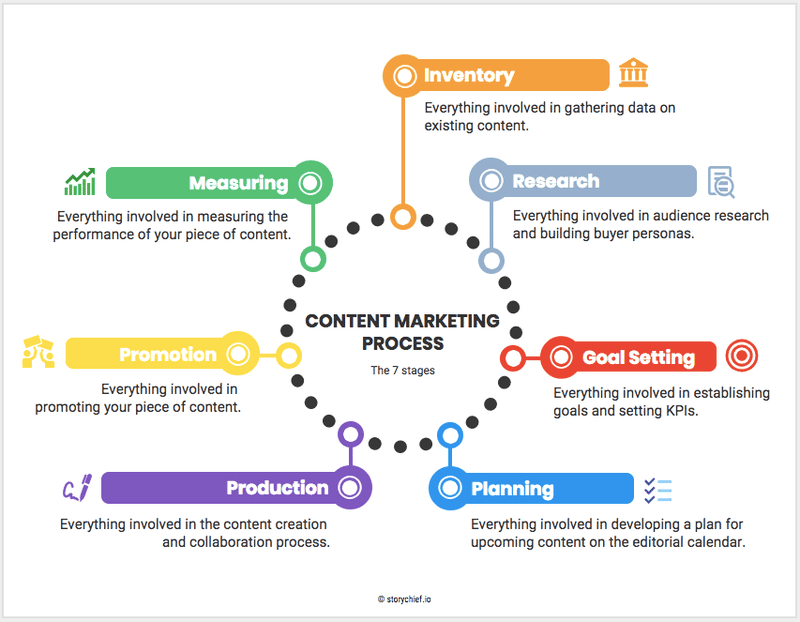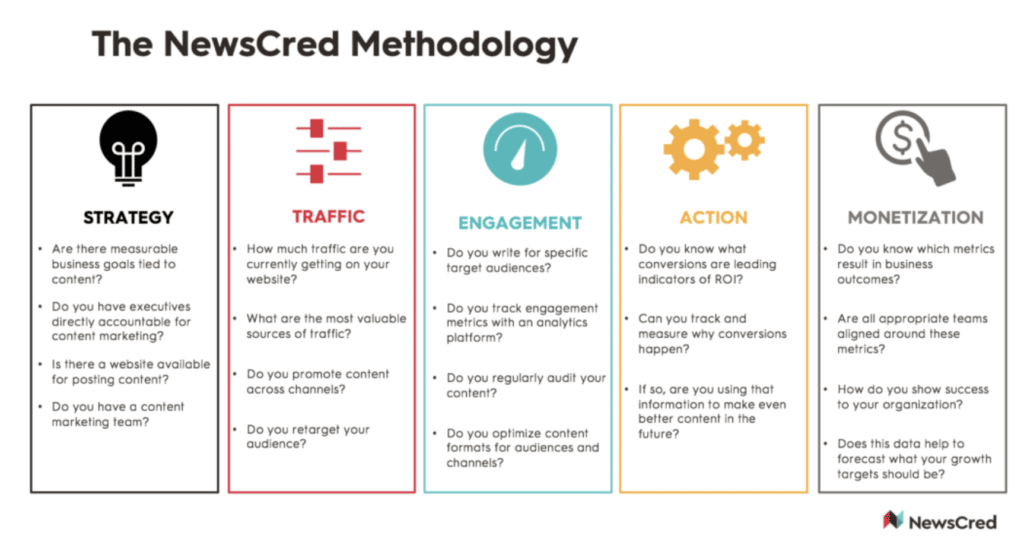Original blog post was published April 2, 2020. Stats have been updated since.
Developing great content takes time — researching, writing, editing, publishing, and then distributing. Content is everything that we as business owners, side hustlers and entrepreneurs do, from blogging, advertising, email marketing, networking, and so on.

The biggest difference between each type of content is based on context and channel. And behind all of this is a great team of people — along with technology — that make everything come together cohesively. To further put the importance of content marketing into perspective, here are a few stats:
- 55% of business professionals claim that great storytelling is what helps them focus on and engage with content
- Content marketing is 3x more cost effective at lead generation than paid search
- 51% of content consumed on the Internet is driven by organic Google searches
- Email subscribers are nearly 4x more likely to share your content on social media
- The most successful B2B marketing teams spend 40% of their marketing budget on content marketing
- 75% of B2B marketers are likelier to use blogging as part of their social media content, as compared to 61% of B2C marketers
- B2B companies who blog consistently receive 67% more monthly leads than companies who don’t blog regularly
- 2% of articles created by B2B brands result in 75% of social shares of all B2B content
- 47% of B2B buyers consumed 3-5 pieces of content from a company before engaging with one of their sales reps
An all-too-common scenario is companies that will create content without any science behind it — meaning they don’t incorporate SEO tactics to understand which search queries are being searched for by their target customers. They also don’t have a solid process in place, which then hinders their ability to pump out content on a consistent basis.
This then leads to traffic, leads, and sales stalling — making the main channels centered around buying lists, cold outreaches by sales, email marketing, and paid marketing. The key to successful content marketing comes down to being able to integrate it into your entire marketing and sales strategy, having a cadence for fresh content, repurposing your content into multiple pieces of content assets, and then distributing it organically as well as through paid avenues.

More importantly, know that every good content marketing strategy boils down to this: put your audience first.
Sure, good content marketing will take time to build, but if you’re putting in the needed effort, it will pay off in the long-term, create more awareness for your brand, position you as a thought leader within your industry, and ultimately, drive sales.
Why Businesses Turn to Content Marketing
Before we dive into the reasons why investing in content marketing is critical for business growth and success, it’s also important to note the following:
- Stay true to the problem you’re solving in your specific niche and be clear that you are an expert within that.
- Great content adds value, and as people consume your content, they will be more inclined to buy from you over time. Don’t think of content as transactional.
- Be intentional. Every piece of content you generate should be aligned with the buyer journey and their lifecycle stage. Don’t create new content just for the sake of having new content. Have a purpose behind everything you do.

That said, let’s look at reasons why investing in content marketing will pay off:
You’re Building a Brand and Awareness Will Follow
I’ve said this before and I stand by it: building a personal brand should be a top priority for any business owner and side hustler. If you’re not focused on making yourself the ‘expert’ or a trusted source within your area of expertise, then you won’t get as much traction as you want.
The best way to do this is to ensure you’re building a personal brand, and with that comes the development of high-quality, helpful content. As you build out your brand, the awareness will eventually follow because you’re bound to get some air cover.
This could come from paid ads (which is often the quickest way to get your message in front of the right audience), through traditional media outlets, and it could happen naturally via organic channels such as posting on your social media profiles.

The point here is that as you start to create your content marketing game plan, you have to figure out how you want to be perceived, how the content will contribute to your brand, and more importantly, how you will help others achieve their own goals.
It Takes Time and Money to Make Money
The ideal of getting rich quickly is something that a lot of people want. However, just like it’ll take time for you to build out your business from an idea to profitability, investing in content marketing will take time as well.
Investing in content marketing isn’t about making transactional sales — and if you think of it this way, you’ll be disappointed. Once content is written and published, it’s important to then put some advertising dollars towards promoting that content.
Here are my recommendations for deciding which type of content you should promote:
- Longer-form blog posts that provide actionable tips and have CTAs throughout to become a subscriber or buy from you
- Lead magnets such as guides, checklists, whitepapers, webinars, etc.
When you spend money on promoting these types of content, you’re looking to exchange tremendous value for contact information. This isn’t about just getting the contact information and then trying to “sell”; rather, it’s about building out nurture flows to figure out the level of engagement and how you can best segment to drive better results.
Another thing to take into account before you start promoting is to figure out the following in terms of measuring success:
- How much are you willing to pay for a lead?
- What would be an optimal CPL?
- What would be an optimal CPA?
- What is the total spend you can dedicate to each content piece?
Focus On the Long Game
A big mistake that businesses will make is that they create content for the sole purpose of generating leads that have the potential of leading to revenue. However, if you change your perspective on the purpose and role that content plays for your audience, you’ll be much more successful.

In other words, your primary goal in creating content should be to serve your audience. This is key for longer-term success and how you expand the lifecycle of your content assets. It’s not about writing a blog post with the hope that it’ll contribute to your financial goals only, but that you are using that content to build an audience who will also help you proliferate that content.
The way your target audience interacts with your content will help you understand the following:
- How you can position and message your offerings to resonate
- What triggers your audience to take action and the type of content that drives them to do so
- Who are the influencers and actual decision makers
Wrapping It Up
As I said before, great content takes time — however, this isn’t to say you have to perfect every piece before publishing. Get into the mindset of testing different content types and topics as much as you can. Doing so will allow you to collect data on what works best in terms of yielding the results you want.
Finally, make sure to always think about how you can serve your target audience. This changes your mindset from, “What’s in it for me?” to “What can I do for you?” Adding value isn’t about transactions — it’s about building relationships.





